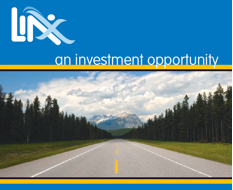Smarter transportation case study #1: Yellowstone LINX Cooperative
The LINX program has integrated transportation providers in 27 counties for an easy-to-use and more seamless network for riders.
LINX is a member cooperative that connects transportation providers across 27 rural counties in Idaho, Wyoming and Montana. LINX uses innovative technologies to market services efficiently via one integrated system. The Yellowstone Business Partnership, or YBP, led the charge for LINX, which was incorporated in January 2010.
Within the Greater Yellowstone region, there had been significant gaps in service and coordination between transportation providers and a general lack of knowledge about available service. Improving the marketing of existing services through a new website is central to the LINX project. This central ticketing and trip planning website allows riders to book and confirm online trips anywhere in the region, as well as print tickets at home.
YBP is also testing a system called “LINX-Comm” that would allow vehicles to communicate directly with the central server about location, availability and scheduling. The LINXComm system includes online ticketing and remote printing, onboard ticket validation, GPS location information for vehicles and Wi-Fi service for riders of participating Linx providers.
The pilot phase for LINX, which began in January, is now testing and developing the following mobility management components:

- Trip planning and ticketing system with multiple customer touchpoints.
- Improved marketing of existing and emerging services.
- Coordination of route schedules and transfer points.
- A centralized location for information on all modes of mobility
Facilitating convenient and affordable transportation in the Greater Yellowstone area will bolster economic viability, as well as reduce traffic congestion and carbon emissions, while helping preserve what is special about the community’s ecosystem. With more than 3 million visitors each year, the region needs to offer viable alternatives to driving a private vehicle. The LINX program has made great strides toward filling that need.
For More Information: Yellowstone Business Partnership
—-
Editor’s Note: Our new report on smarter mobility demonstrates how existing and emerging technologies can squeeze more capacity from over-burdened highways, help commuters avoid traffic delays and expand and improve transportation options, all while saving money and creating jobs. Many of these smart transportation solutions are already fueling innovation throughout the country, through both the public and private sector. These 14 case studies from around the U.S. and the world demonstrate the community benefits smart mobility solutions are giving regions, cities, and businesses.



